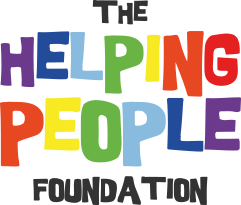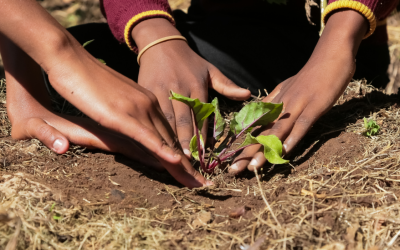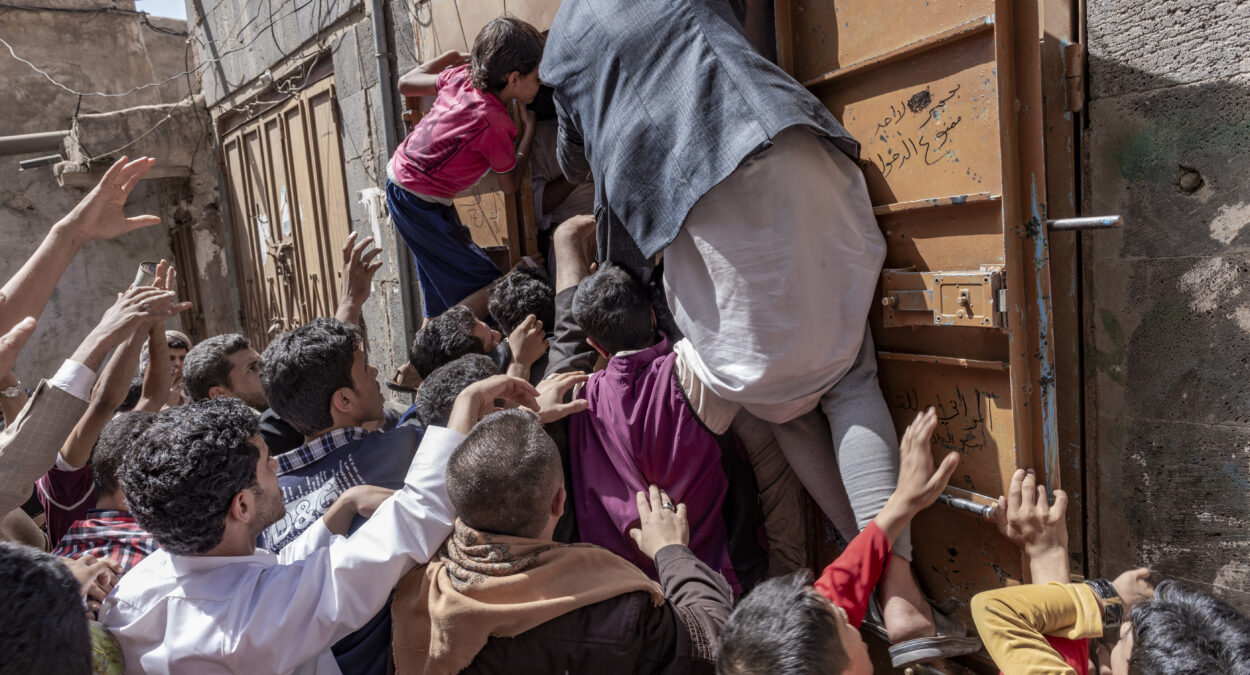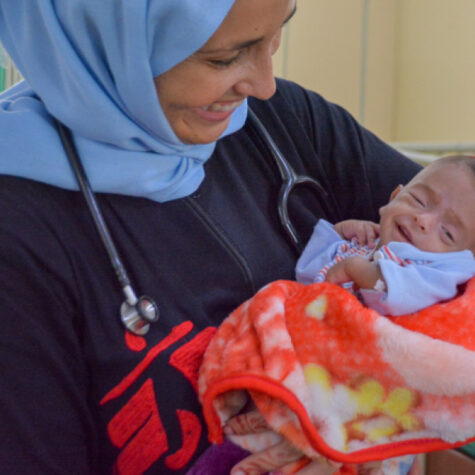CURRENT LIVING CONDITIONS IN YEMEN
SCHOOL
It is estimated that the illiteracy rate of the Yemeni population over the age of 15 is just under 30%. Only an estimated half of women can read and write, compared to 85% of men.Compulsory education for children is in the law, but the educational situation for girls and boys is still poor. Attendance at primary school is free in Yemen, but boys and girls often drop out. Girls in particular are forcibly married off at an early age and do not receive any more education. In addition, the standard of teaching is rather poor.
Only 37% of children attend secondary schools, as the school system is fee-based and at the same time there are hardly any educational facilities. There are seven public and eight private universities in Yemen.
MEDICINE
Life expectancy is about 68 years for women and 64 years for men. In the country, only half of the health care facilities are accessible. According to Aktion Deutschland Hilft, there are only 0.31 doctors per 1,000 people.
The child mortality rate in Yemen is high - almost 6% of girls and boys do not reach the age of five. UNICEF reports that one Yemeni child dies every 10 minutes from preventable diseases (see UNICEF). Cholera also breaks out repeatedly in Yemen. Similarly, malaria is still a threat to people, although the disease is now treatable.
Water
Only 2.6% of Yemenis have safe access to drinking water. 60% of people have access only to basic sanitation, so nearly 40% have no facilities for hygiene, toileting, or hand-washing.
nutrition
20 million people have no reliable food supply. Currently, 14.3 million people are at risk of hunger. According to the United Nations, 70% are dependent on humanitarian aid, which is barely allowed by the government. 80% of the poor live in rural areas.
Due to the geographical conditions - mountainous region and little water - the people can hardly do their own farming and are almost completely dependent on aid supplies.

Geography
Yemen lies to the south of Saudi Arabia, borders Oman to the east and is one and a half times the size of Germany. The southwest of the country lies on the Gulf of Aden and the Red Sea. Sana'a, the capital, is located in the western part of the country.
The coastal region is characterised by mountain ranges, with individual craters from earlier volcanic periods. The climate here is hot and humid, but there is hardly any rainfall. Only rarely do the foothills of the Indian monsoon cool down the tropically hot summer days. In the central part of the country there are also volcanic rocks in the form of marginal mountains. At night it is very cool and during the day the temperatures are a pleasant 22-24°C.
The highest rainfall in the country is measured in the mountain regions. To the north, it borders on highlands with altitudes between 2000 and 2500 metres. It is mostly dry here all year round with very hot summers and mild winters.

History
The present-day state of Yemen was merged from the conservative North Yemen, which turned towards Saudi Arabia, and South Yemen, which has been independent of the British colonial territory since 1967. In 1990, the Heads of Government of the Yemeni Arab Republic and the People's Democratic Republic of Yemen formed the joint Republic of Yemen. The first joint president was Ali Abdallah Salih. Salih fuelled conflicts between Zaydiyya and Wahhabiyya ethnic groups. These conflicts triggered a total of six wars in Saada province between 2004 and 2010.
The south of the country, on the other hand, wanted to violently regain its independence. The attacks were put down by the North and thousands of South Yemeni military and administrative personnel were dismissed. Through the occupation of important posts in the south by Northern Jeminites, the claims of the groups in the south were pushed back further and further and resistance was for the most part brutally put down. The upheavals during the "Arab Spring" in 2011 completely disrupted Yemen and divided the population, politics and military.
Interim President Abd Rabbo Mansu Hadi was supposed to improve the situation with reforms, a new constitution and elections. He was supported politically and militarily by a coalition (SGK). The "Southern Movement" continued to strive for the independence of the South, which was not addressed in the negotiations. The Huthis, the young movement also involved in the 2011 protests, did not back the new political course either. Instead, the new government consisted mainly of old elites, the former opposition party Islah as well as the new ruling party "General People's Congress" (AVK), who did not seek any kind of improvement for the population. This changed trust in the political leadership and strengthened the government-critical groups with new growth.

Economics
The unemployment rate in the country is 12.8 % (see statista). Because of the war, many people gave up their businesses or limited their business activities. The GDP was around 2,500 US dollars per capita in 2016 and continued to decline in the following year. Although only just under 3% of Yemen is arable, this sector employs more than 50% of the labour force and contributes 20% to GDP.
Yemen has oil reserves, yet it is not a member of OPEC. The raw material in the country is mainly extracted by foreign companies that share the profits with the government. However, the raw material does not seem to be available in sufficient quantities for much longer. In addition, natural gas is now exported, mainly to the USA.
Current conflicts in Yemen
Meanwhile, violent conflicts were already being fought in the north of the country, also by Islah, Huthi and allies of the former president. In 2014, the transitional government in Sana'a was forced to step down. A short government period under Prime Minister Khaled Bahah followed, but he resigned in the same year.
In 2017, the Southern Transition Council was formed to represent the interests of the Southern Jeminites and to fight for an independent Southern Arabia. It was supported by the United Arab Emirates. In August, there were escalations between the South and the Hadi government, which were supposed to end with the Riyadh agreement. But the Southern Transitional State refused to cooperate and instead proclaimed Southern self-government without being recognised as a political representation by the entirety of the population in the South.
Saudi Arabia considers the north of the country as its territory and is trying to end Huthi control there with bombardments. Access to the airport and the country's largest port, al-Hudayda, was restricted. Victory over the rebels remains elusive, and at the same time Saudi Arabia is under massive criticism from the world community. Iran has now also intervened in the conflict and is gaining increasing influence over Yemen.
UN MEDIATION UNSUCCESSFUL
The UN's mediation to resolve the conflict has so far been unsuccessful. In Yemen, there is an impenetrable war economy from which the population is massively suffering.
Sources:
Federal Foreign Office, Yemen: Overview, Humanitarian Situation; URL: https://www.auswaertiges-amt.de/de/aussenpolitik/laender/jemen-node/jemen/202270
statista: Yemen: Unemployment rate from 1991 to 2024; URL: https://de.statista.com/statistik/daten/studie/370607/umfrage/arbeitslosenquote-im-jemen/#:~:text=Im%20Jahr%202020%20lag%20die,rund%2012%2C8%20Prozent%20prognostiziert. (as at: 21.01.2022)
unicef. URL: https://www.unicef.de/informieren/projekte/asien-4300/jemen-19406/kinder-im-krieg/75274?sem=1&un_source=google&un_medium=cpc&un_campaign=C_TPL_AlleL%C3%A4nder_Brand_Desktop&un_content=Jemen_UNICEF_Kombination_mt-p&un_term=unicef%20jemen&gclid=Cj0KCQiAxc6PBhCEARIsAH8Hff1b5HQ-JcxJNx8u-Kwgb4WzsaxY0xJg3pmlIxqu1BV6080Ypb3PCocaAj_KEALw_wcB (last accessed 28.01.2022)





